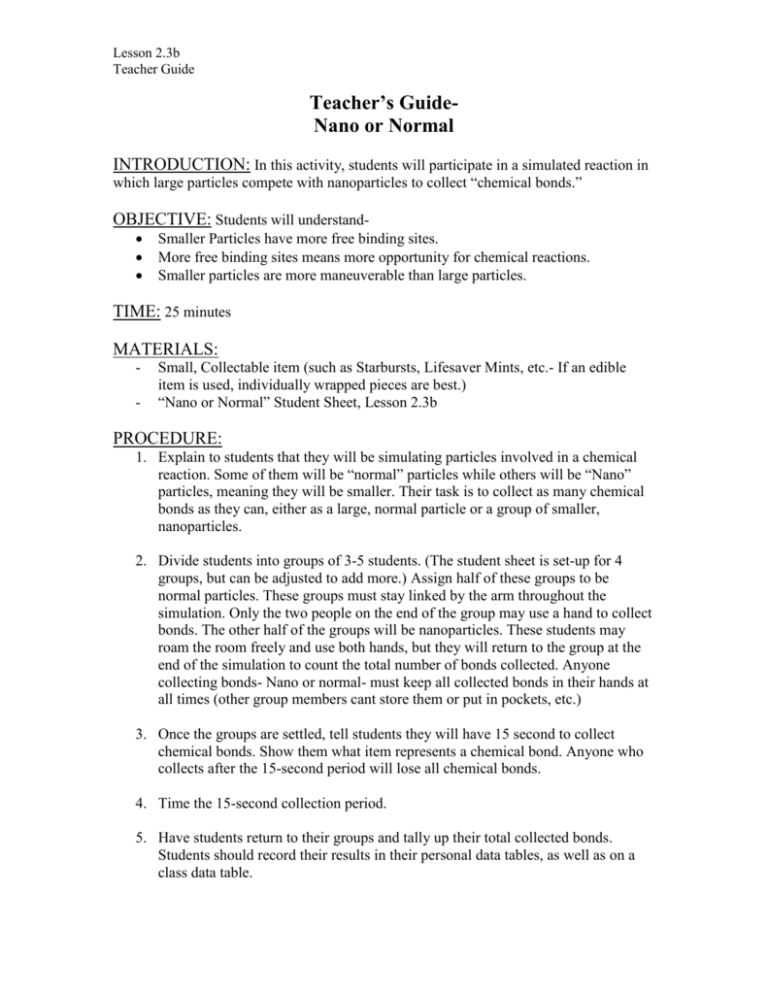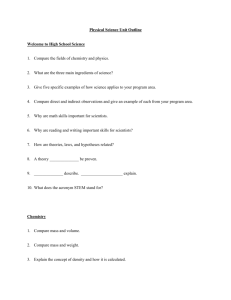Lesson2.3b- Teacher`s Guide Nano or Normal
advertisement

Lesson 2.3b Teacher Guide Teacher’s GuideNano or Normal INTRODUCTION: In this activity, students will participate in a simulated reaction in which large particles compete with nanoparticles to collect “chemical bonds.” OBJECTIVE: Students will understand Smaller Particles have more free binding sites. More free binding sites means more opportunity for chemical reactions. Smaller particles are more maneuverable than large particles. TIME: 25 minutes MATERIALS: - Small, Collectable item (such as Starbursts, Lifesaver Mints, etc.- If an edible item is used, individually wrapped pieces are best.) “Nano or Normal” Student Sheet, Lesson 2.3b PROCEDURE: 1. Explain to students that they will be simulating particles involved in a chemical reaction. Some of them will be “normal” particles while others will be “Nano” particles, meaning they will be smaller. Their task is to collect as many chemical bonds as they can, either as a large, normal particle or a group of smaller, nanoparticles. 2. Divide students into groups of 3-5 students. (The student sheet is set-up for 4 groups, but can be adjusted to add more.) Assign half of these groups to be normal particles. These groups must stay linked by the arm throughout the simulation. Only the two people on the end of the group may use a hand to collect bonds. The other half of the groups will be nanoparticles. These students may roam the room freely and use both hands, but they will return to the group at the end of the simulation to count the total number of bonds collected. Anyone collecting bonds- Nano or normal- must keep all collected bonds in their hands at all times (other group members cant store them or put in pockets, etc.) 3. Once the groups are settled, tell students they will have 15 second to collect chemical bonds. Show them what item represents a chemical bond. Anyone who collects after the 15-second period will lose all chemical bonds. 4. Time the 15-second collection period. 5. Have students return to their groups and tally up their total collected bonds. Students should record their results in their personal data tables, as well as on a class data table. Lesson 2.3b Teacher Guide 6. As a class, calculate the average number of bonds for normal particles and the average number of bonds for nanoparticles. 7. Redirect students towards the analysis questions on their lab assignments, emphasizing the average as a valuable piece of evidence. These can be finished as homework if time is a factor.








